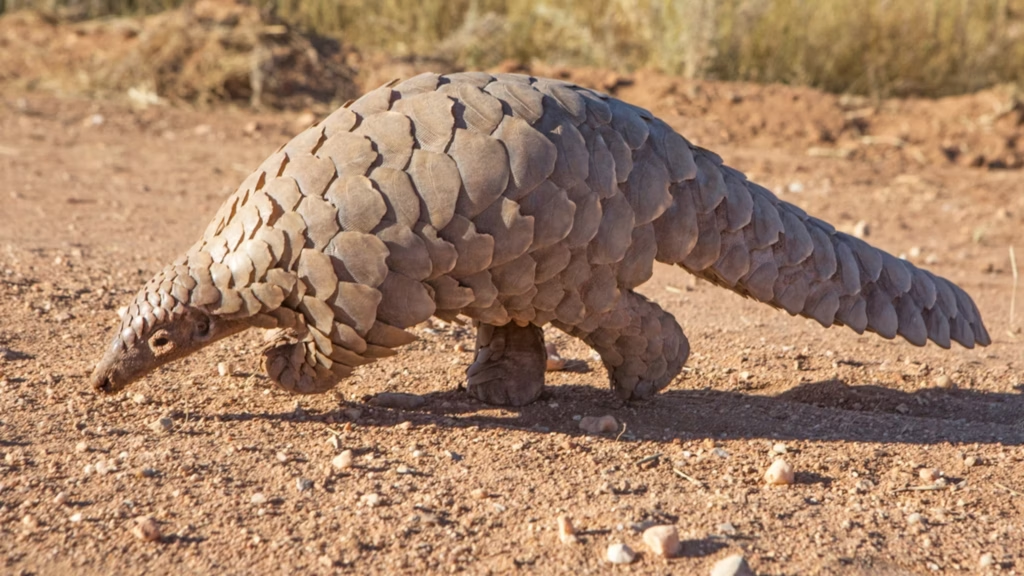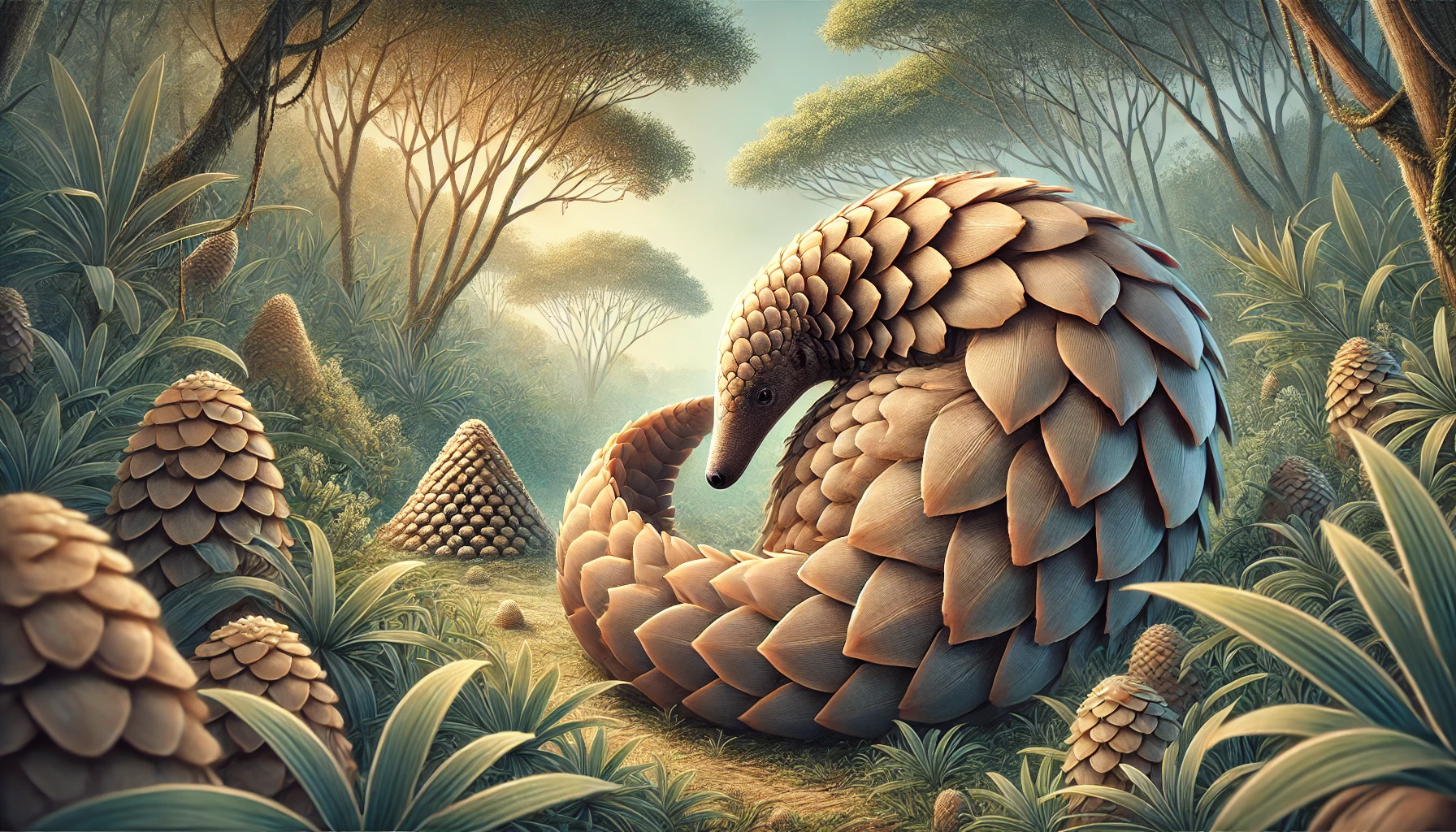Pangolins are some of the most fascinating and misunderstood creatures in the animal kingdom. Often mistaken for reptiles due to their scaly appearance, these unique mammals hold an essential place in their ecosystems. Sometimes called “scaly anteaters,” pangolins belong to the family Manidae. Their defining feature is their protective keratin scales, making them the only mammals in the world with this unique armor.
Pangolins are native to Africa and Asia, with eight recognized species split between the two continents. They thrive in various habitats, from dense forests to open savannas, depending on the species. Let’s dive into some really incredible facts about these creatures, along with a discussion on their critically endangered status.

Amazing Facts about Pangolins
Fact 1: World’s Only Armored Mammal
Pangolins hold the unique title of being the only mammals covered in protective keratin scales. These scales, which can make up to 20% of their body weight, act as a natural suit of armor. When threatened, a pangolin curls into a tight ball, using its scales as a shield to fend off predators. This defense mechanism is highly effective against natural predators like lions or tigers but unfortunately does little against humans, their greatest threat.
Fact 2: Pangolins Are Excellent Exterminators
Pangolins are insectivores with a particular taste for ants and termites. Armed with long, sticky tongues—sometimes longer than their bodies—they can devour thousands of insects in a single feeding session. Over a year, one pangolin can consume more than 70 million ants and termites, playing a vital role in controlling insect populations and protecting crops from infestations.
Fact 3: Pangolins are Digging Dynamos
Pangolins are equipped with powerful front claws that make them exceptional diggers. These claws are designed to break through tough surfaces, such as termite mounds and compact soil. Ground-dwelling species, like the giant pangolin (Smutsia gigantea), use their claws to excavate extensive burrow systems that can be several feet deep. These burrows serve as safe havens from predators and harsh weather.
In addition to providing shelter, these burrows play an ecological role in their habitats. By aerating the soil and creating microhabitats for other species, pangolins contribute to the health of their ecosystems. Interestingly, pangolin burrows are often reused by other animals, such as snakes, warthogs, and smaller mammals, further highlighting their importance to the environment.
Fact 4: Some Pangolins Are Also Arboreal Masters
For tree-dwelling species like the white-bellied pangolin (Phataginus tricuspis), their habitats require a different set of adaptations. These arboreal pangolins are excellent climbers, using their long, prehensile tails as an additional limb. The tail helps them grip branches securely, allowing them to maneuver through dense forests in search of food.
Their ability to scale trees also provides them with a strategic advantage, offering access to arboreal ant and termite nests that are out of reach for ground-dwelling competitors. This behavior ensures a plentiful food supply and helps them avoid many terrestrial predators. At night, arboreal pangolins often curl up in tree hollows or thick foliage, blending seamlessly into their surroundings to stay safe.
The Tragic Plight of Pangolins
Pangolins are the unfortunate poster species for the global wildlife trafficking crisis. Despite their ecological importance and fascinating biology, these gentle creatures are being driven to the edge of extinction by human greed. In fact, pangolins hold the tragic title of being the most trafficked mammals in the world. The numbers are staggering: between 2010 and 2019, over 900,000 pangolins were trafficked, according to estimates
The demand for pangolin products is primarily driven by traditional medicine and luxury dining in parts of Asia and Africa. Their scales, made of keratin (the same material as human nails and hair), are falsely believed to possess medicinal properties, including treating arthritis, boosting lactation, and curing cancer. None of these claims have any scientific basis, yet pangolin scales fetch a high price on the black market. Meanwhile, pangolin meat is considered a delicacy and a status symbol in some regions, further fueling illegal hunting.
Critically Endangered
All eight species of pangolins are now listed on Appendix I of the Convention on International Trade in Endangered Species (CITES), granting them the highest level of international protection against commercial trade. Despite these measures, enforcement remains a significant challenge. Corruption, lack of resources, and porous borders enable traffickers to continue their operations with devastating efficiency.
Conservationists and organizations worldwide are fighting to save pangolins from extinction. Anti-poaching initiatives, habitat preservation projects, and public awareness campaigns are crucial components of this effort. Groups like the Pangolin Crisis Fund and Save Pangolins work tirelessly to rescue and rehabilitate pangolins and advocate for stronger laws and enforcement against trafficking. Without significant changes in human behavior, stricter enforcement of wildlife protection laws, and a shift in cultural perceptions about the use of wildlife products, these incredible animals could disappear within a generation.
The plight of the pangolin is not just a story of an animal in danger—it’s a stark reminder of the impact of human activity on biodiversity. By protecting pangolins, we not only safeguard a species but also take a step toward preserving the delicate balance of our ecosystems.

